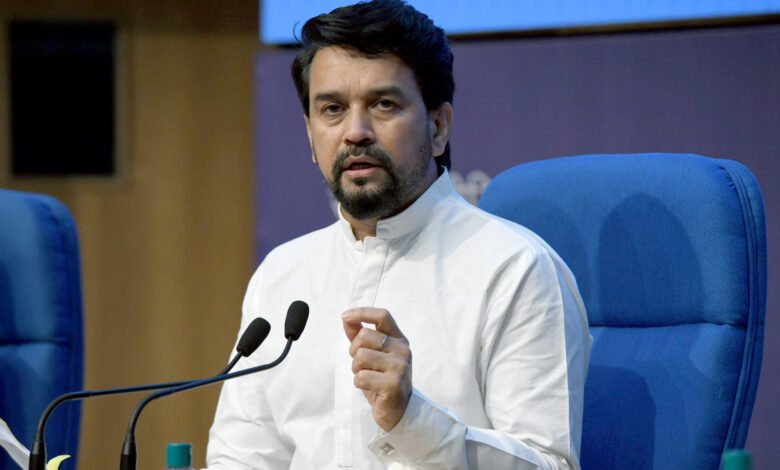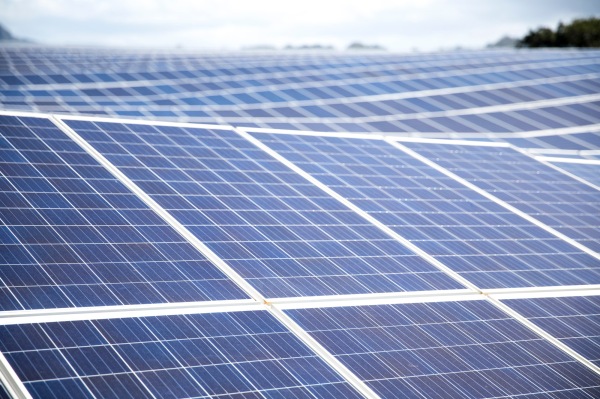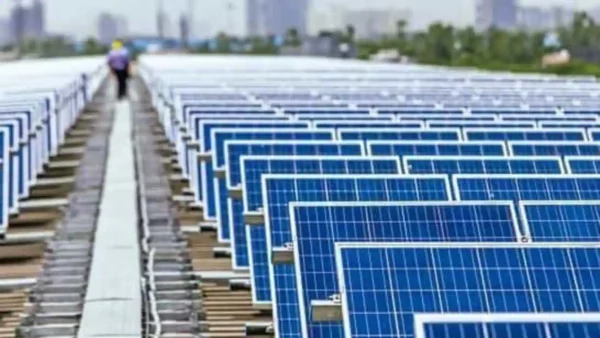Cabinet approves 2nd tranche of PLI scheme for solar PV modules, Rs. 19,500 cr allocated

The Union Cabinet approved the second tranche of the performance-linked incentive (PLI) scheme for the development of solar photovoltaic (PV) on Wednesday. The proposal was put forward with an outlay of Rs. 19,500 crores by the Ministry of New and Renewable Energy (MNRE).
The Union Cabinet approved the second tranche of the performance-linked incentive (PLI) scheme for the development of solar photovoltaic (PV) on Wednesday. The proposal was put forward with an outlay of Rs. 19,500 crores by the Ministry of New and Renewable Energy (MNRE).
Union Minister Anurag Thakur in a press briefing following the Cabinet meeting, Union Minister Anurag Thakur said that the performance-linked incentive (PLI) for the “National Programme on High-Efficiency Solar PV Modules” is aimed at achieving a manufacturing capacity of “gigawatt (GW)-scale in high-efficiency solar PV modules.”
The Union minister added that a provision of Rs 19,500 crores has been made and the government wants to create an ecosystem for manufacturing high-efficiency solar photovoltaic (PV) modules.
The Cabinet, in a statement, said that this scheme is expected to install close to 65 Gigawatts of annual manufacturing capacity of fully and partially integrated solar PV modules.
The statement further read that the scheme will attract around Rs 94,000 crore in direct investment that will result in the creation of manufacturing capacity for allied equipment in the solar manufacturing chain.

The scheme will also generate direct employment for about 195,000 people and indirect employment for approximately 780,000 people.
The scheme will also generate direct employment for 195, 000 people and indirect employment for approximately 780,000 people.
According to the government, a transparent selection process will be used to choose the solar photovoltaic (PV) firms that will profit from the PLI scheme. In addition, the incentive will be disbursed for five years post-commissioning of solar PV manufacturing plants.
The Cabinet has also approved the Programme for Development of Semiconductors and Display Manufacturing Ecosystem in India, which would increase developer subsidies.
The government will provide compound semiconductors, packaging, and other semiconductor facilities, as well as semiconductor fabs “across the technology nodes,” with 50% fiscal support, as per an official release.
The modified scheme will accelerate investments in India’s semiconductor and display industry. According to discussions with potential investors, it is anticipated that construction on the first semiconductor factory will start soon.

The minister of state for power, R K Singh, exuded confidence in the program’s ability to assist in saving up to 1.4 trillion rupees annually.
The minister of state for power, R K Singh, exuded confidence in the program’s ability to assist in saving up to 1.4 trillion rupees annually.
Singh said that because of domestic manufacturing, the PLI-II for the solar modules will result in Rs 1.4 trillion in savings, which will also result in a large number of inflows due to exports.
With respect to a PLI sanction of Rs. 4,500 crores and an RfP of 10 Gw, MNRE got around 50 Gw of proposals in the first round of tendering. A variety of businesses, including Coal India, Vikram Solar, L&T, Megha Engineering, and several new ones, submitted close to 18 bids for the project. Aside from RNESL, the winners were Adani Infrastructure and Shirdi Sai.
To accommodate numerous bids, the corpus was raised to Rs 19,500 crore in the Union Budget 2022–23.
A publication recently reported that the new round of the PLI will have three different schemes for different product categories. The largest share of the allocated corpus, Rs 12,000 crore, could go to end-to-end manufacturing of ‘polysilicon-wafers-cells-modules’ (raw material to finished product).
The government will allocate Rs 4,500 crore for wafer-cell modules and Rs 3,500 crore has been designated for the manufacturing of cell modules. The scheme may now be viewed as 3 different standalone plans. The remaining funds will be transferred to the other categories if a particular category is undersubscribed.
The draft proposal of the MNRE says that the scheme can now be divided into three separate standalone schemes. If a certain category is not fully subscribed, the funds will be transferred to the other categories.
The draft suggests a bid capacity cap of 10 Gw for the polysilicon-module category and 6 Gw for the other two. A bidder must submit their level of manufacturing integration, proposed manufacturing capacity, product efficiency, and year-to-year local value addition.




